Last Updated on January 27, 2023 by Admin
Read the case study You be the Judge, presented at the end of Chapter 6 (Guido, p. 94) which begins, “The day after surgery the nurse removed a drainage
Read You Be the Judge presented at the end of Chapter 5 (Guido, p. 65–66) which begins, “The patient had an apparent cardiac event at home… and answer the following questions:
- What evidence would you collect from the clinic to determine what standard of care was delivered to this patient both before he was seen and at the time he was seen in the clinic?
- What might the family’s attorney allege in a supplemental report?
- How would one decide the standard of care for this patient?
- How would you decide the outcome of this case?
Read the case study You be the Judge, presented at the end of Chapter 6 (Guido, p. 94) which begins, “The day after surgery the nurse removed a drainage tube…” and answer these questions:
- Do the facts of the case support the plaintiff’s reliance on res ipsa loquitur?
- Does the fact that the defense did produce expert witness testimony negate a successful res ipsa loquitur outcome?
- What other facts would you need to determine if the nurse’s actions were negligent?
- If applicable, should damages be assessed?
- How would you decide the case?
Read the case study You be the Judge, presented at the end of Chapter 7 (Guido, p. 112) which begins, “The patient was in surgery to remove moles from her back…” and answer the following questions:
- Were there damages that should be paid to this patient for negligence?
- Who should be the individuals responsible for these damages? For example, is the surgeon the individual most liable for the damages owed to the patient?
- Are there any defenses that the defendants could cite that would mitigate their liability to this patient?
- How should the court decide the damage awards in this instance?
Assignment Expectations
Length: 16 slides minimum; answers must thoroughly address the questions in a clear, concise manner.
Structure:
Title: 1 slide
Objective: 1 slide
Chapter 5 case study: at least 4 slides
Chapter 6 case study: at least 4 slides
Chapter 7 case study: at least 4 slides
Conclusion: 1 slide
References: 1 slide
Additionally, because a good presentation has few words on the slides include a script with the verbiage you would say when presenting; script should be a minimum of 50 words per slide.
References: Use the appropriate APA style in-text citations and references for all resources utilized to answer the questions. Include at least three (3) scholarly sources to support your claims, at least one per case study
Format: Save your assignment as a Microsoft PowerPoint document and a Word document (.pptx) and (.doc or .docx) or Open Office Impress.
File name: Name your saved file according to your first initial, last name, and the module number (for example, “RHall Module1.pptx”).
M3 Assignment UMBO – 4
M3 Assignment PLG – 4, 6
M3 Assignment CLO – 2, 3
Expert Answer and Explanation
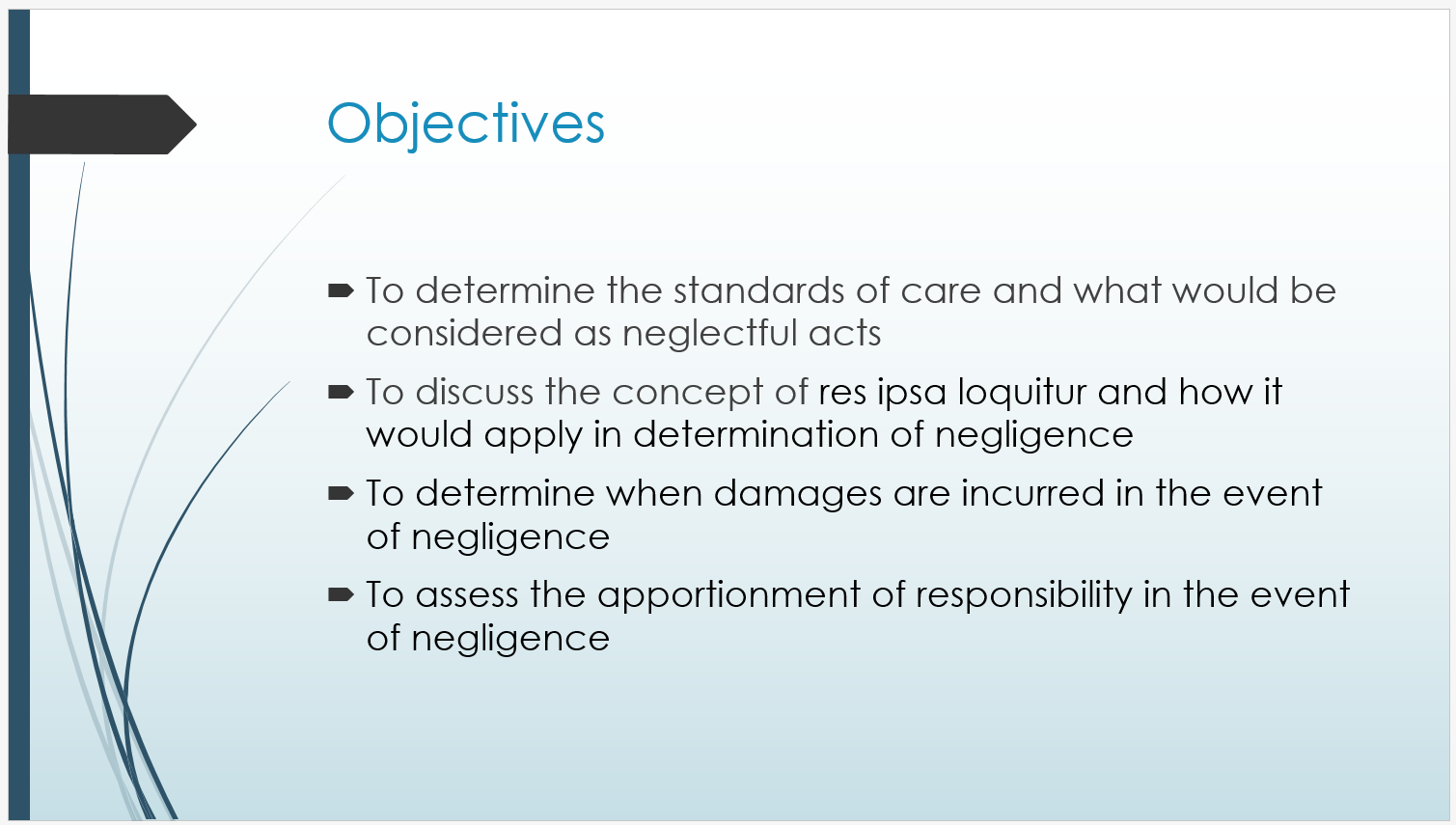
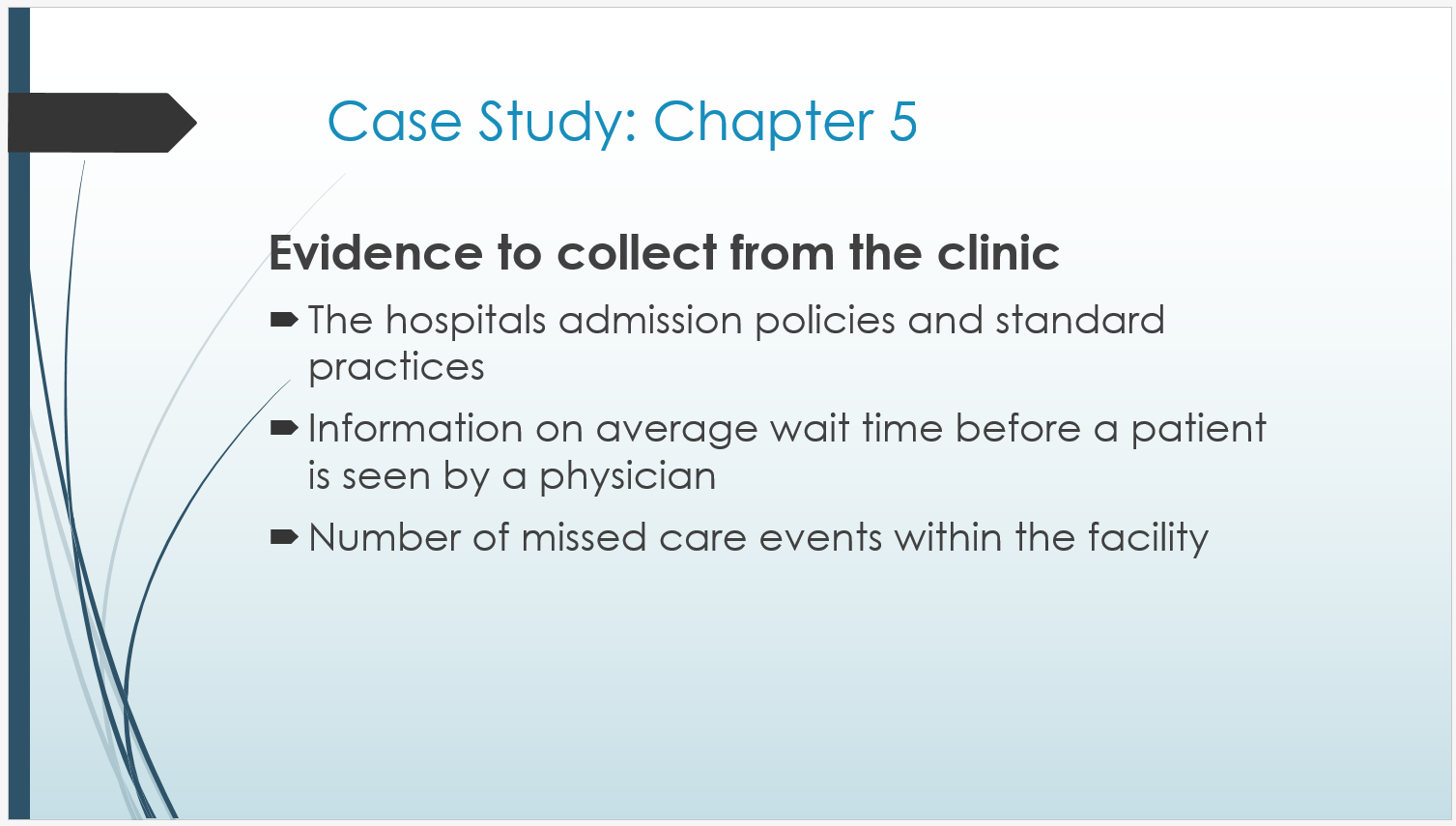
The evidence I would collect from the clinic, includes the admission policies and standards of practice used in the hospital. This will help to understand whether the nurse adhered to those guidelines or not (Pozgar, 2013). Similarly, I would also seek to find information detailing the hospital’s average wait time before a patient is seen by a physician, and whether this could have led to adverse patient outcomes.
Another evidence to collect includes evidence on the number of missed care events within the facility to determine whether such events are a common occurrence, linking it with the possible outcome to be faced by the patient. These facts will allow to determine the standards of care within the facility.
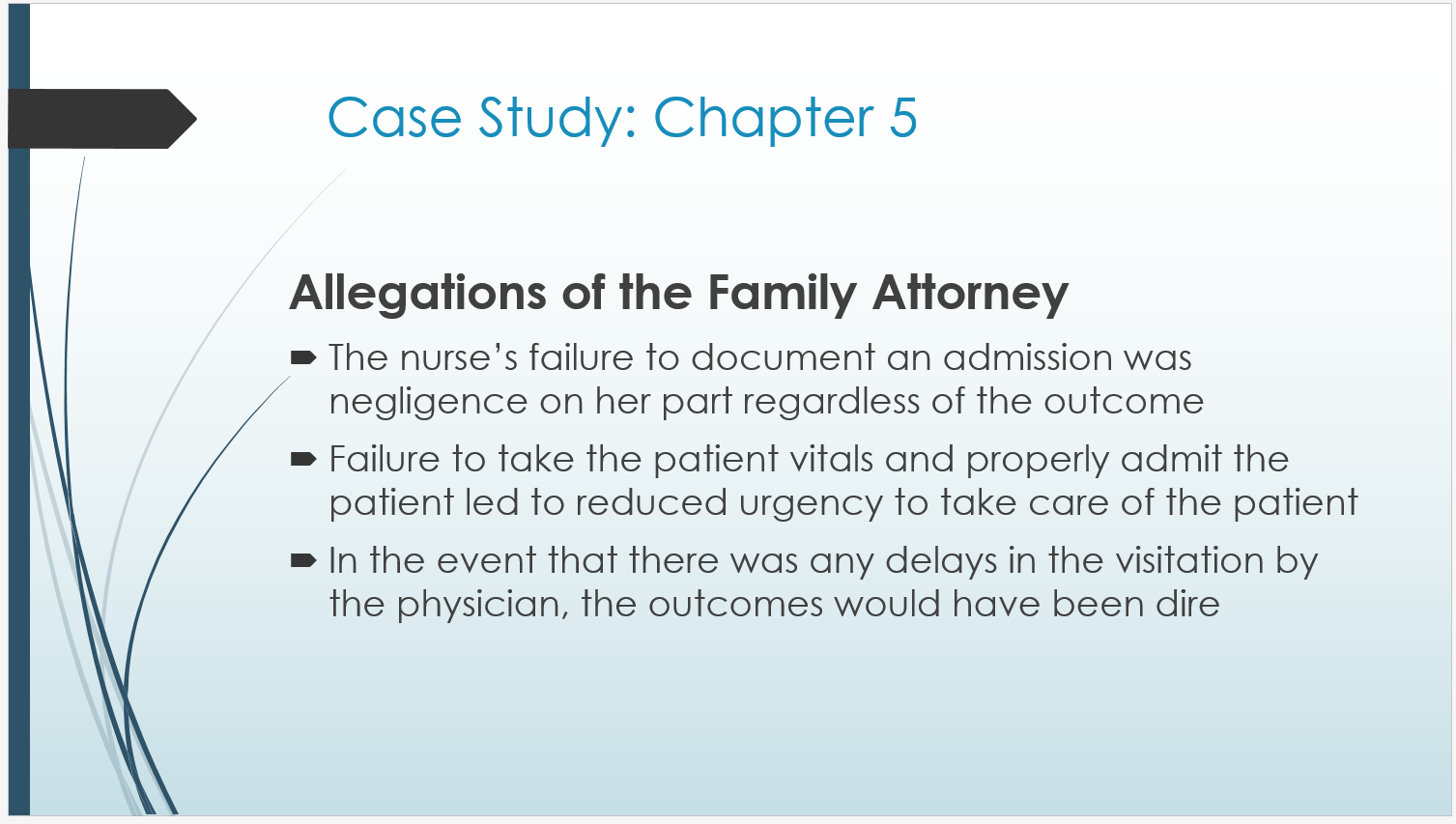
Some of the things the family attorney would allege include the fact that the nurse failure to document an admission was negligence on her part regardless of the outcome. The family attorney would also allege that failure to take the prerequisite patient vitals and properly admit the patient led to reduced urgency to take care of the patient leading to a fifteen minute delay that could have had severe adverse outcomes
He would also allege that in the event that there was any further delays in the visitation by the physician the patient would have likely died from the condition Therefore, failure by the nurse to take proper care as is required from her could be termed as a gross neglect by the family attorney (Guido, 2014)
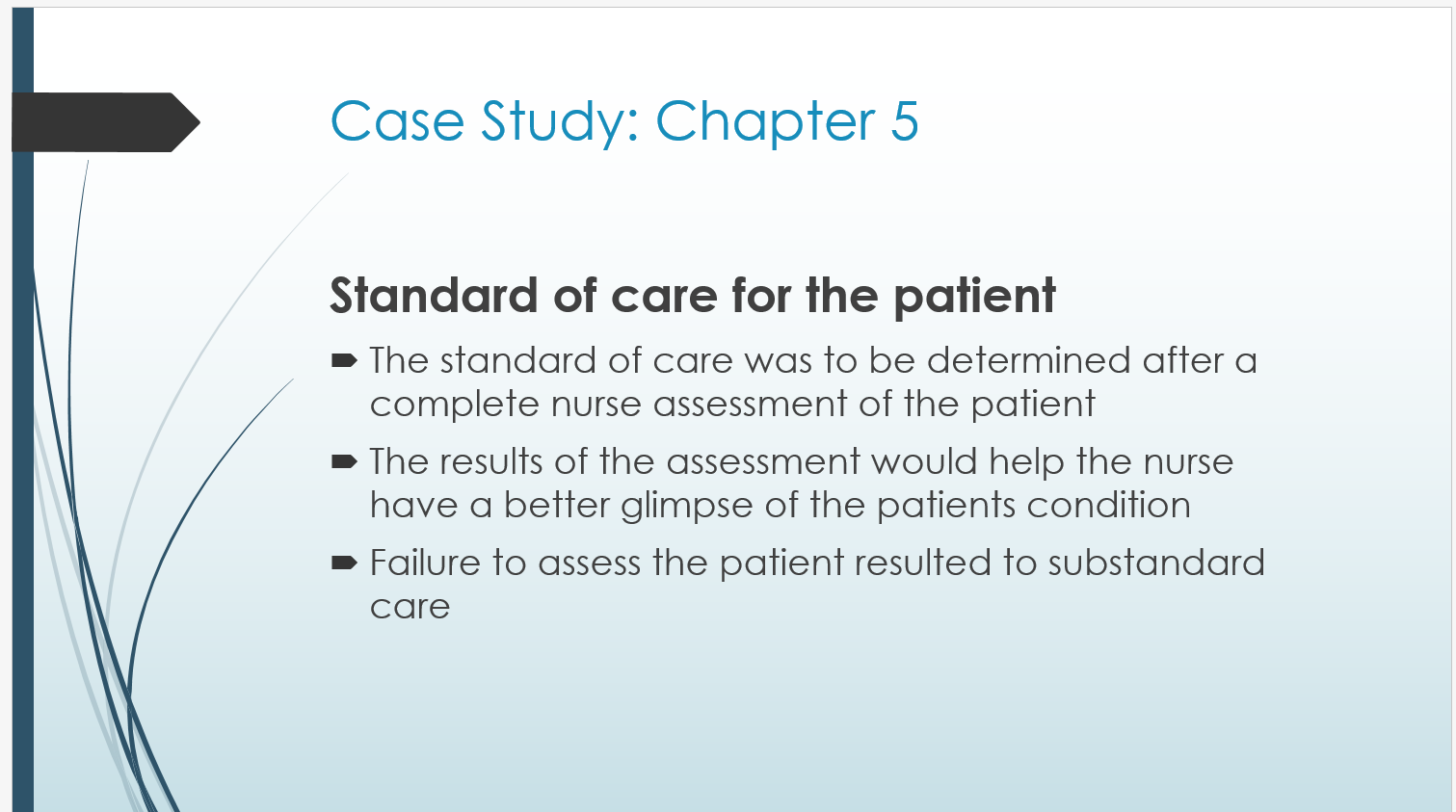
The standards of care for the patient would be decided based on the nursing assessment that was to be conducted by the admitting nurse (Wang et al., 2019). Based on the results of the assessment, then the admitting nurse would have had a better glimpse of the patients condition and determine the type of care the patient needs (Wang et al., 2019). However, this was not done making the standards of care delivered to be ranked as substandard.
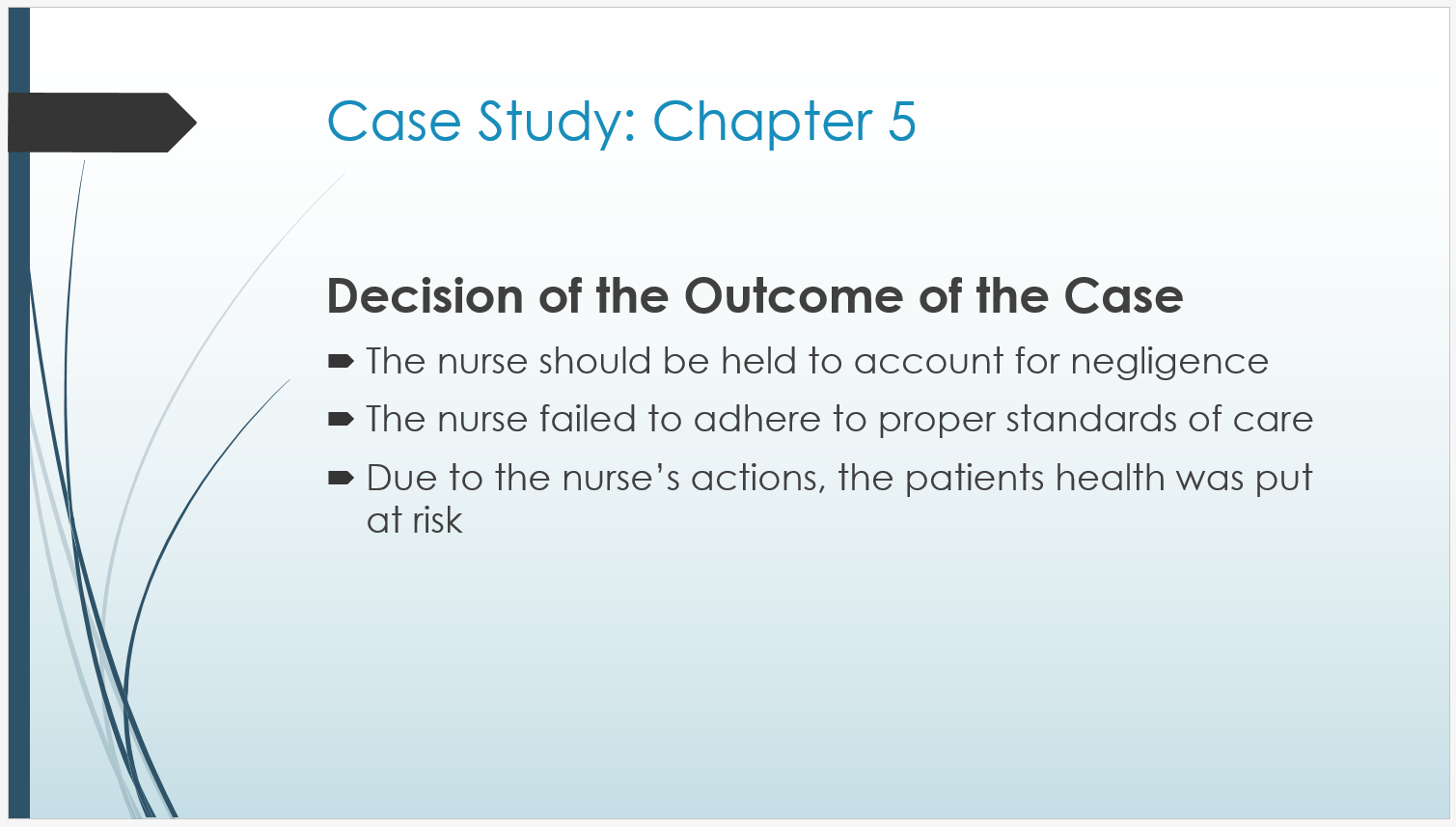
Based on the merits of the case, the nurse should be liable for negligence Based on the acceptable standards of care, the nurse should have assessed the patients condition and document the findings of the assessment before going to call the physician Failure adhere to proper standards of care put the patient’s health at risk (Faria et al., 2019). The nurse should therefore be held responsible for the act of negligence (Guido, 2014).
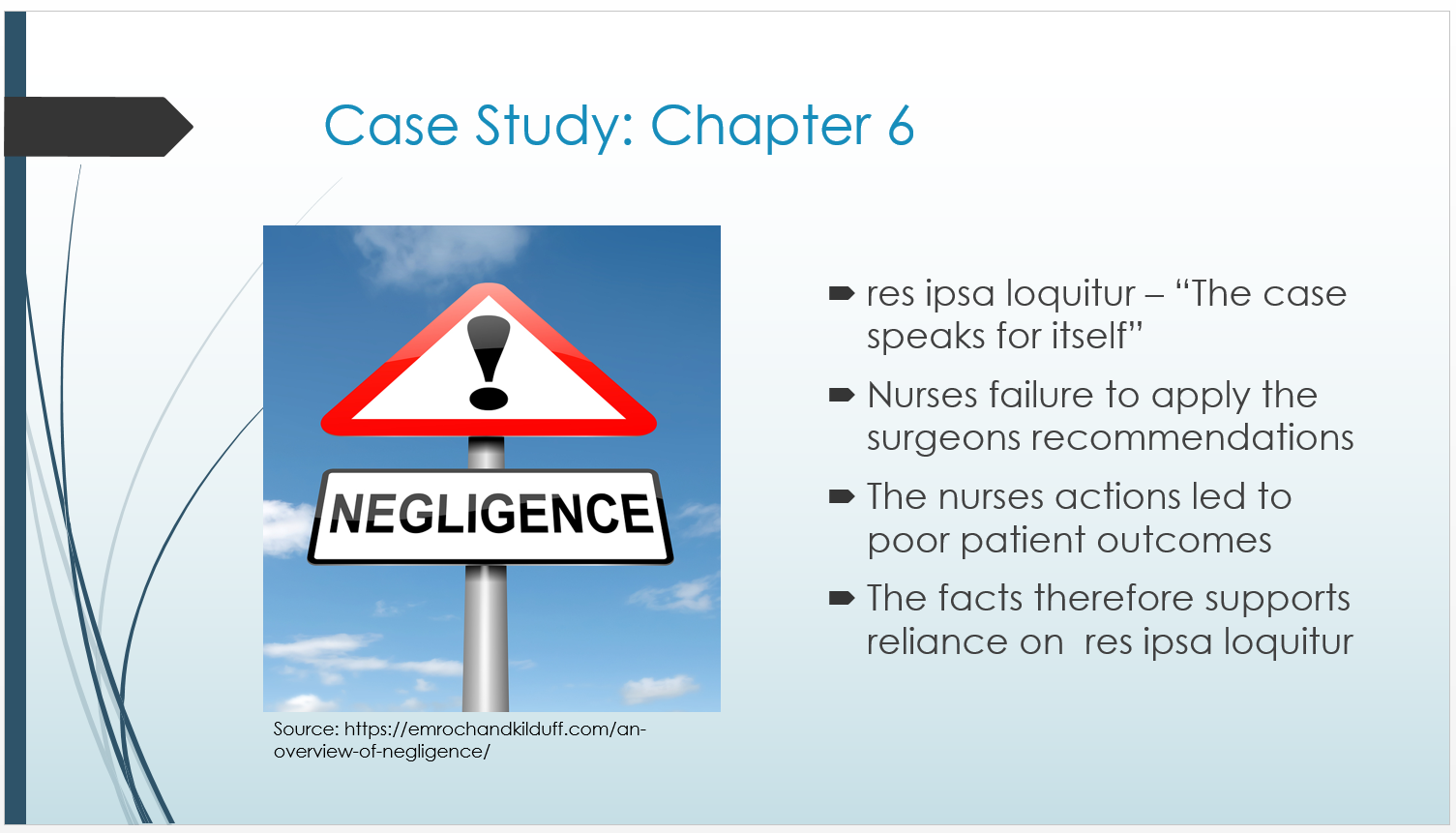
The term “res ipsa loquitur” is a term which can be equated in simple language to mean that “ the actions speak for itself.” It is a concept in tort law that allows a negligent action to be proven without necessarily requiring the support of all the six elements of negligence or malpractice to be proven (Guido, 2014).
In the case it can be seen that the nurse went against the surgeon’s orders to insert an in-and-out urinary catheter, which led to the poor outcomes being faced by the patient. Therefore, using these facts, the clients reliance on res ipsa loquitur is valid.
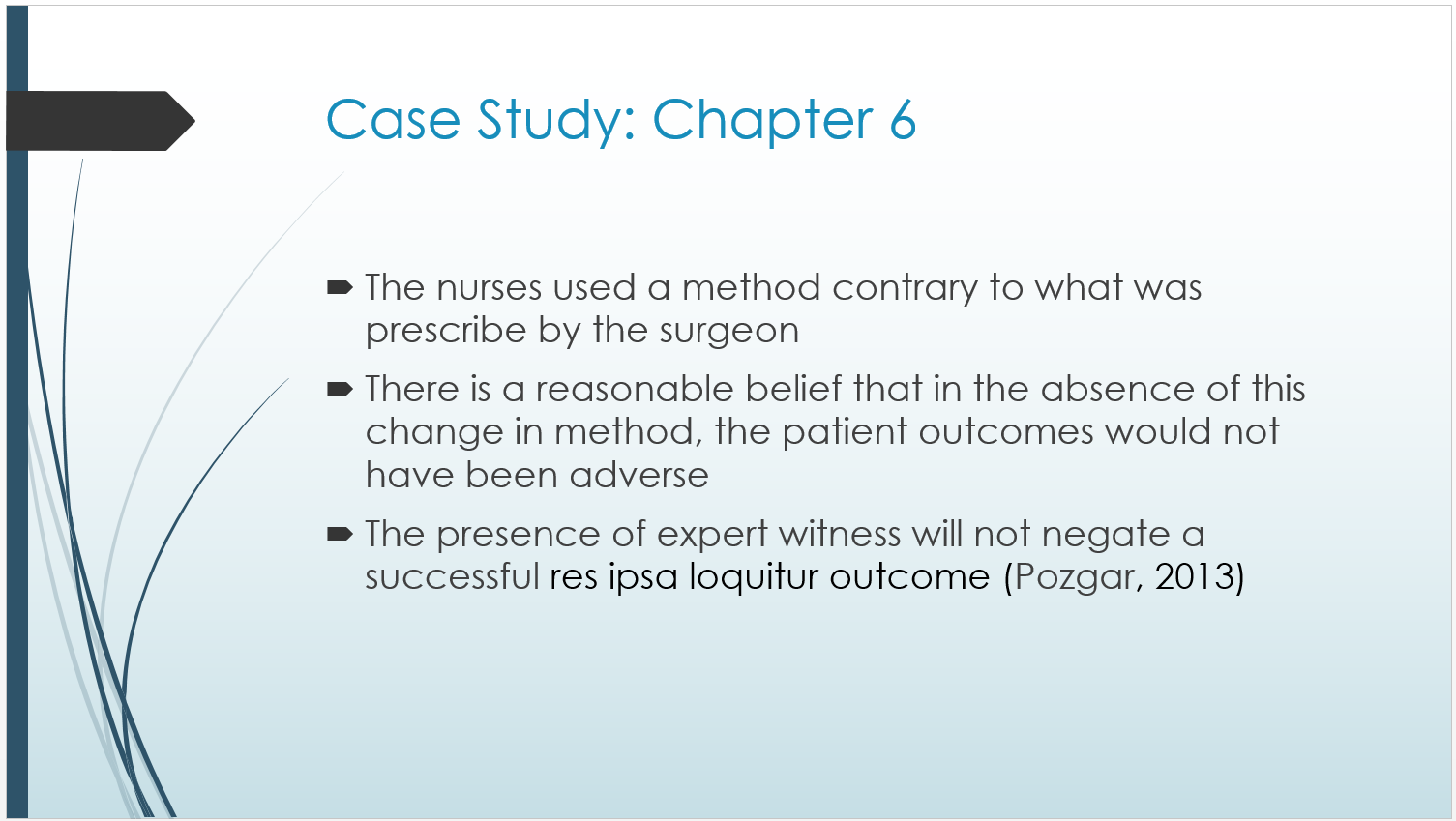
The errors made by the nurses to use a different method contrary to what the surgeon had prescribed led to damages being experienced by the patient These damages would not have likely happened had the nurse used the prescribed approach to care for the patient.
This shows that there was a reasonable belief that, in the absence of negligence on the nurse’s part, the event would not have occurred. Therefore, the fact that the defense produced expert witnesses does not negate a successful res ipsa loquitur outcome (Pozgar, 2013)
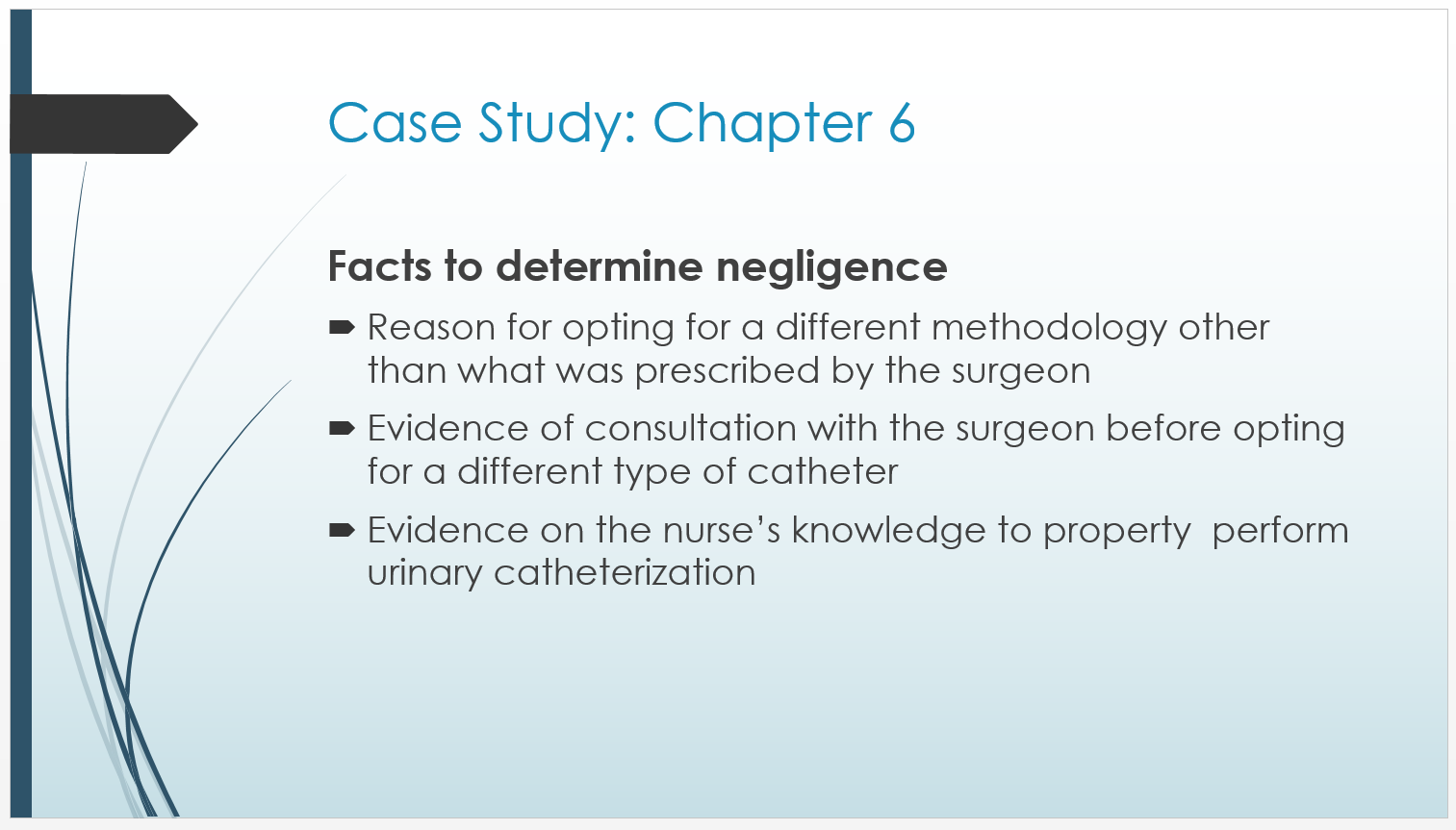
Other facts that would be required to determine whether the nurse’s actions were negligent include their reason of going contrary to the surgeons orders. If there are valid reasons to support this change, then the commission of negligence will be reevaluated. Another fact is whether the nurses consulted with the surgeon before deciding to opt for a different form of catheterization.
IF not, they can be proved to be negligent on performing contrary to instructions from the surgeon. Another evidence to collect is whether the nurse had sufficient knowledge to property perform urinary catheterization
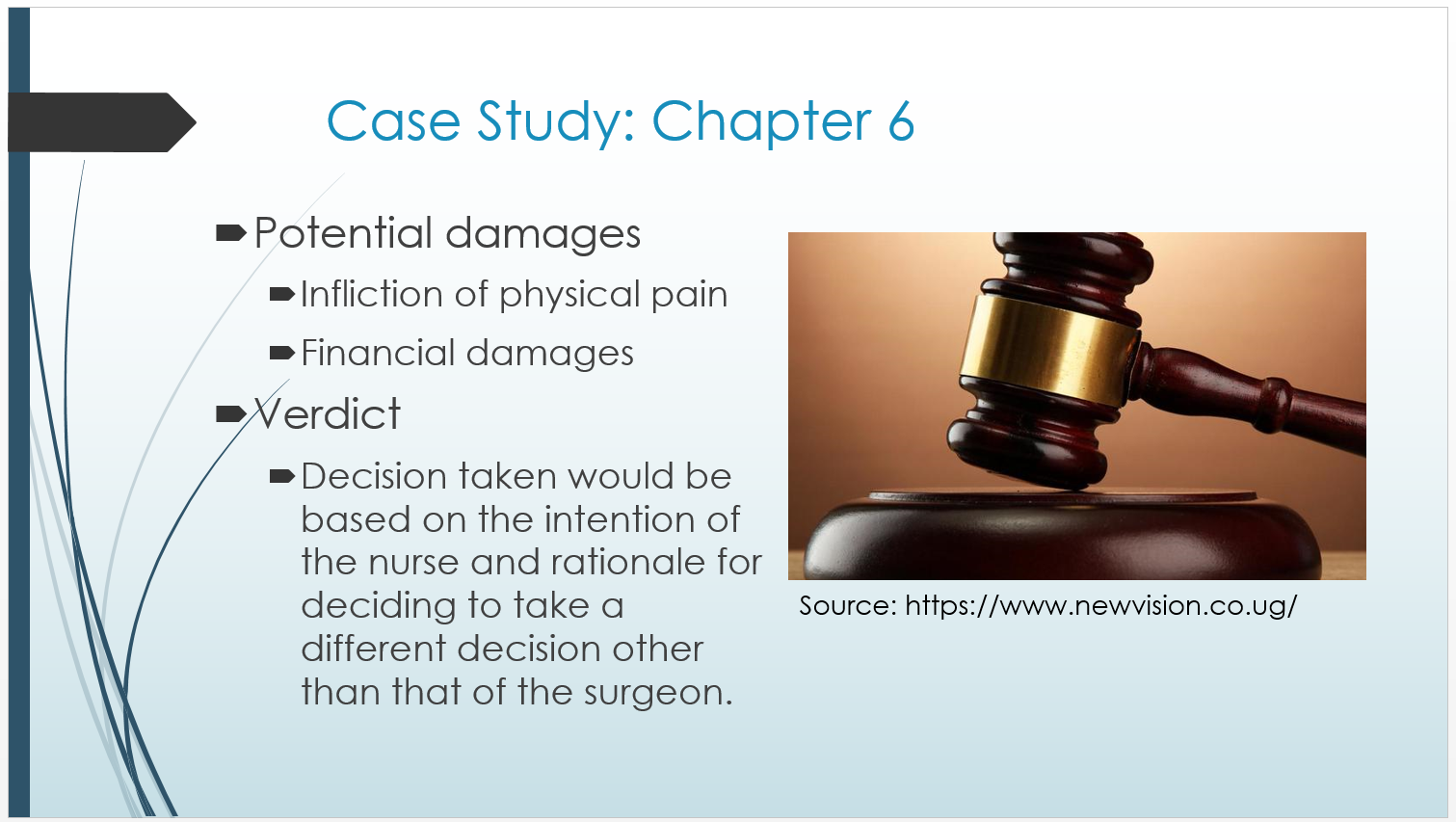
The damages should be assessed by the patient, with some of the potential damages that can be charged include, damages for causing physical agony and pain, damages resulting from increased cost of care due to longer admission in the facility and any other complications resulting from the procedure. The decision of the case would be based on the intention of the nurse and her rationale for deciding to take a different decision other than that of the surgeon.
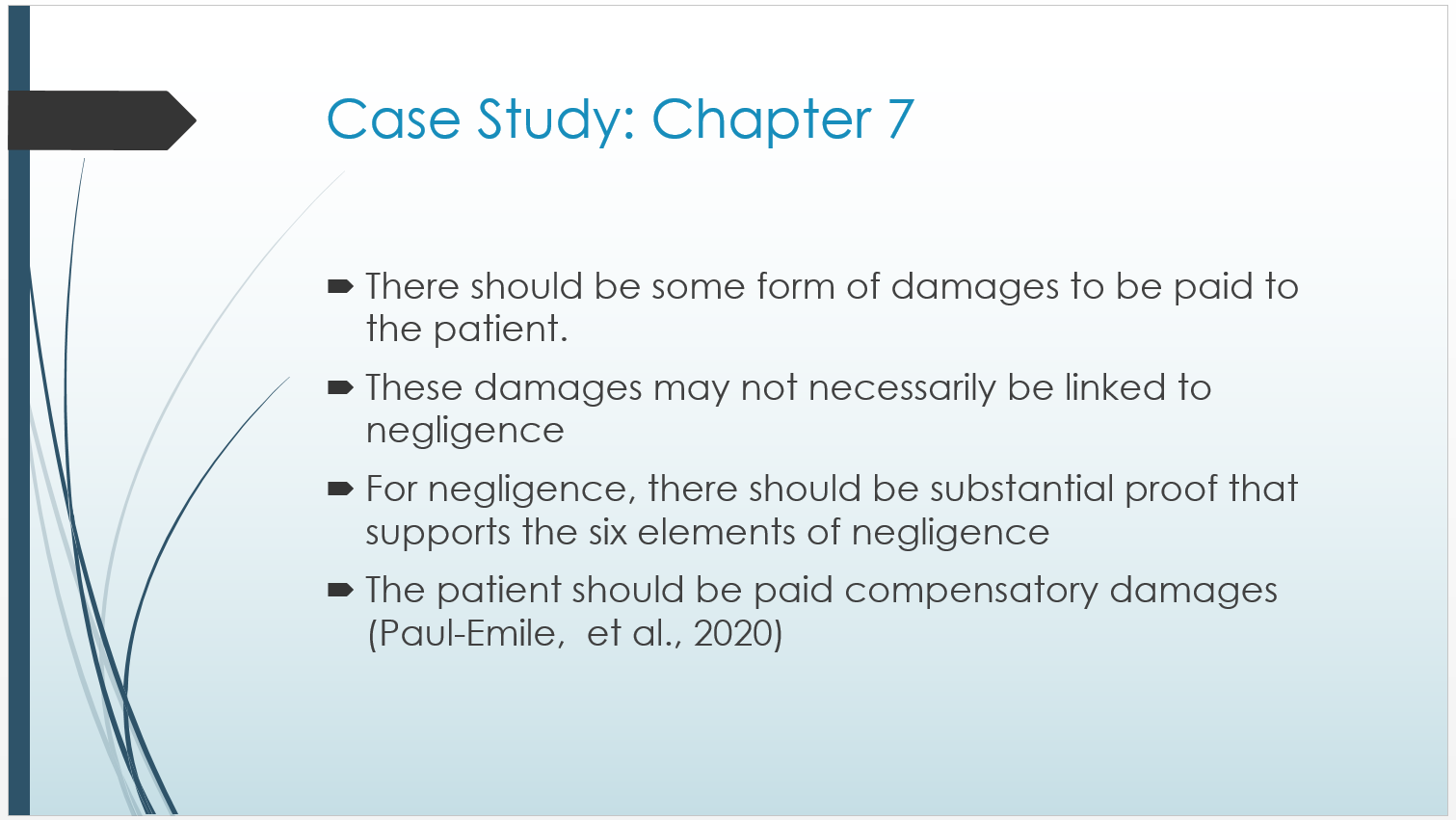
There should be some damages to be paid, however, the damages cannot be directly linked to negligence. Damages for negligence should only be paid if there is substantial proof that meets the six elements of malpractice or negligence, which are not indicated in the case. However, the damages to be paid to the patient are compensatory damages, which are meant to remedy the damages incurred by the patient to the point equivalent to how she was before the burns (Paul-Emile, et al., 2020).
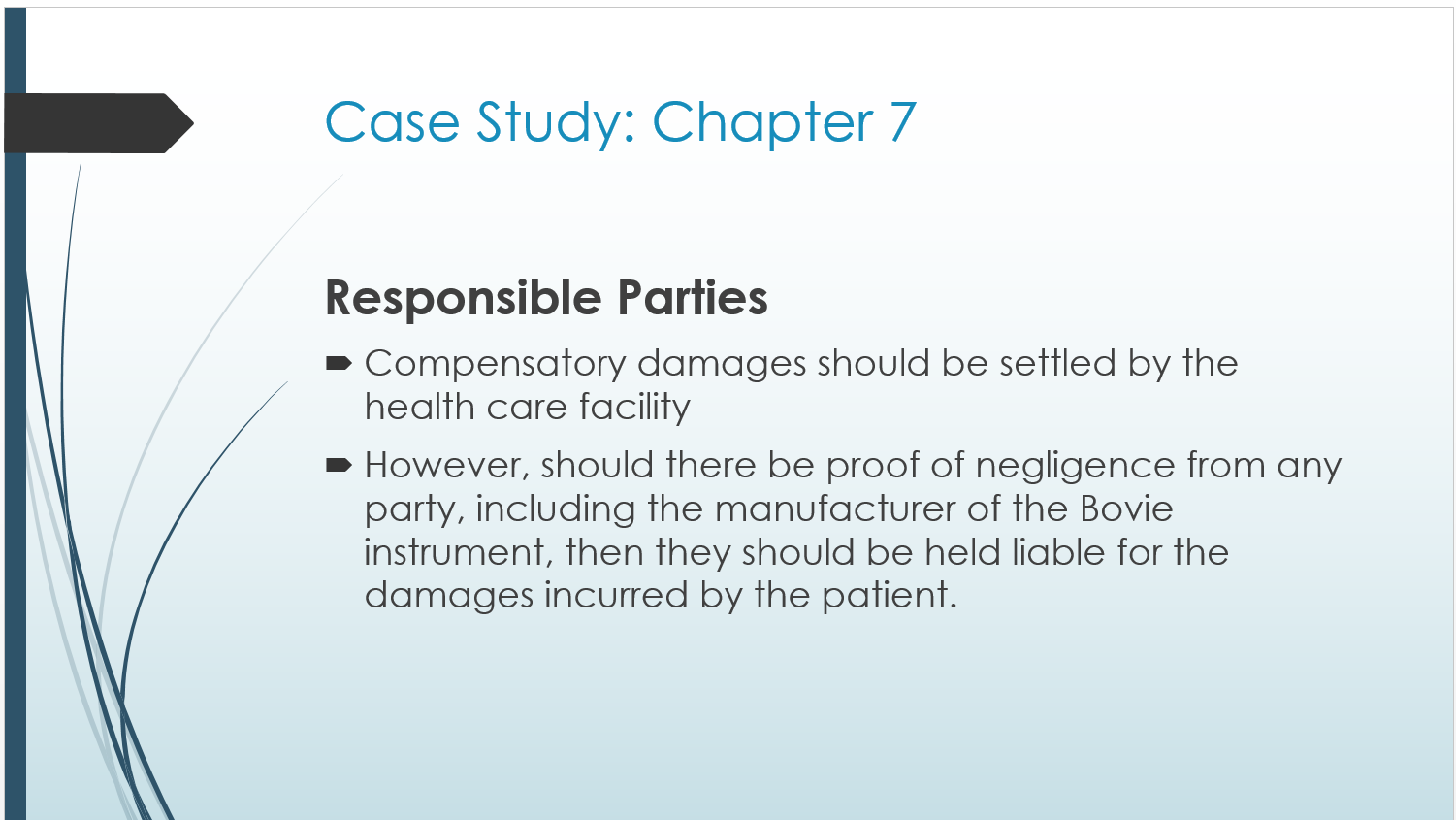
It is difficult to apportion responsibility on the person in charge of the damages without proof of negligence. The fact that the patient was under the care of the hospital, makes them responsible for taking care of the compensatory damages.
However, should there be proof that the surgical team failed to inspect the equipment before the procedure, or failed to adhere to standard protocols when it comes to operating the equipment used, then they should be held responsible negligence (Guido, 2014), and in turn, also liable to pay the patient for the damages incurred.
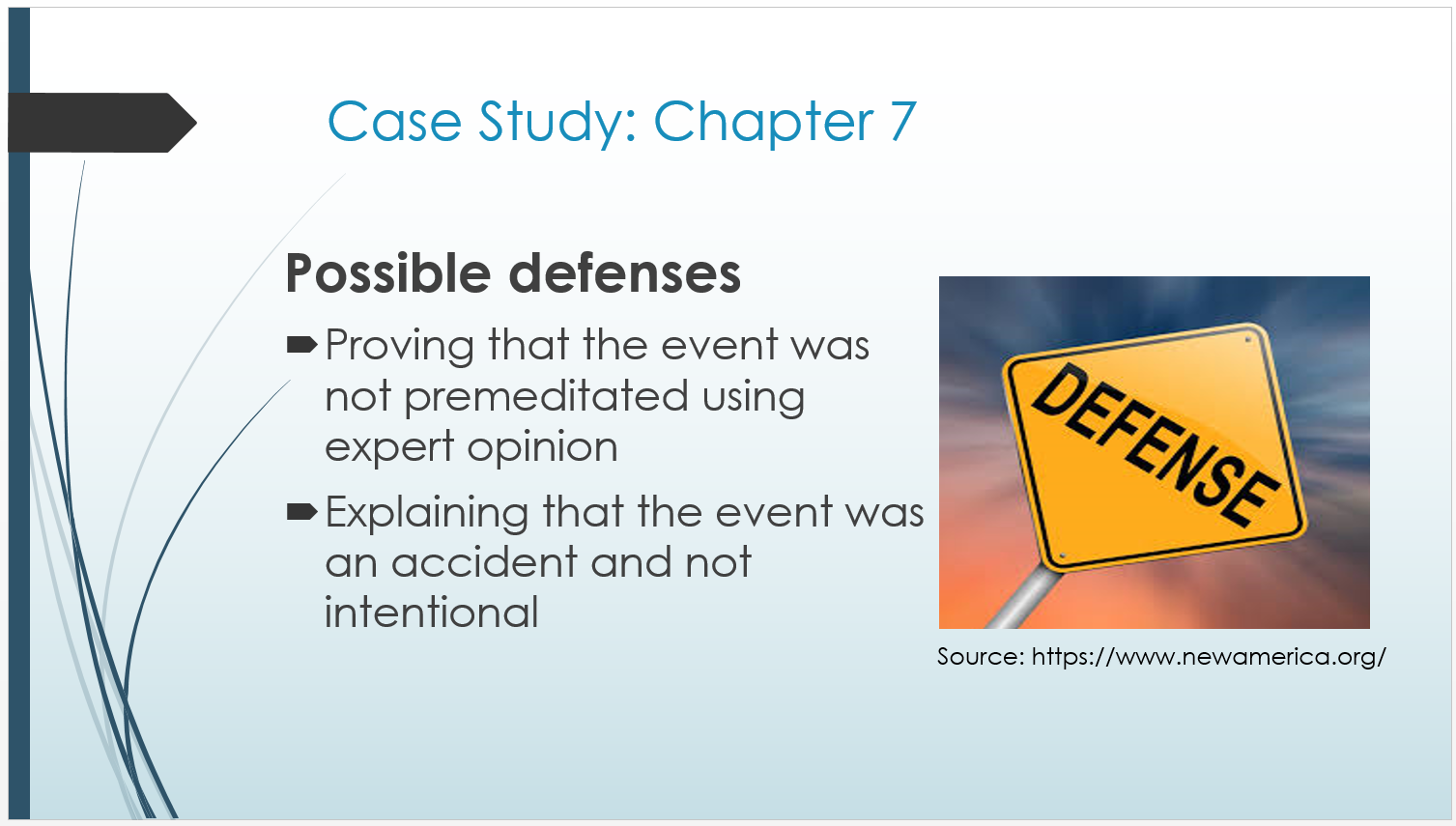
To mitigate the liabilities to the patient, there are a few defenses that the defendants could use. The first defense is to argue that the fire was an accident and it was not premeditated. Likewise, the prompt actions by the surgical team to put out the fire and inform the patient about the event was a sign that no harm was intended. Another defense that could be used is the introduction of an expert report to show that there was no premeditation to the fire, proving innocence against negligence of the surgical team.
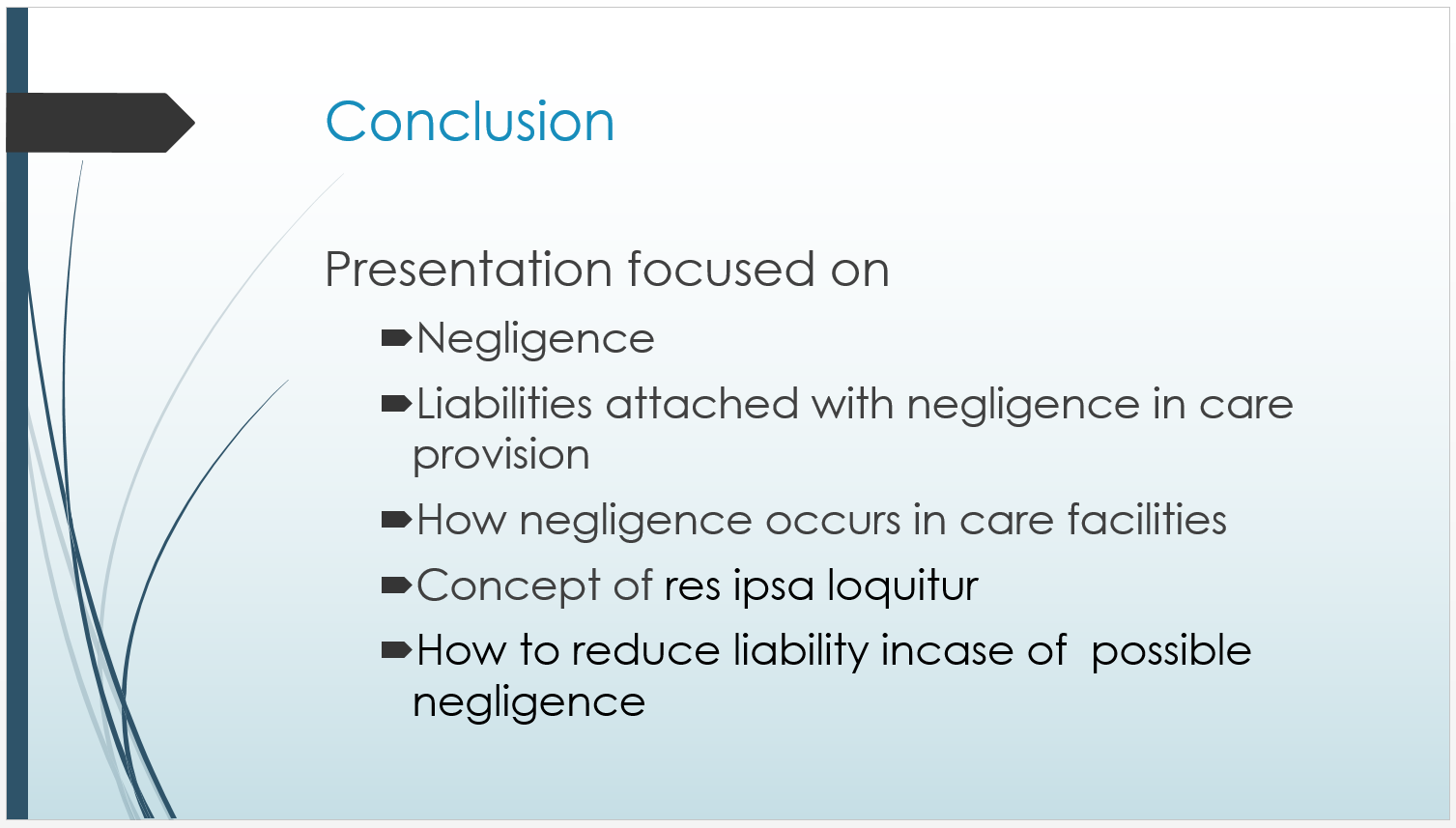
The court should assess the case based on the presented evidence, including expert reports to assess whether there was any form of negligence. In case it is proven so, then the parties involved should be held liable. Otherwise, compensatory damages should be issued to the patient by the health care facility given that the accident happened in its premises (Paul-Emile, et al., 2020).
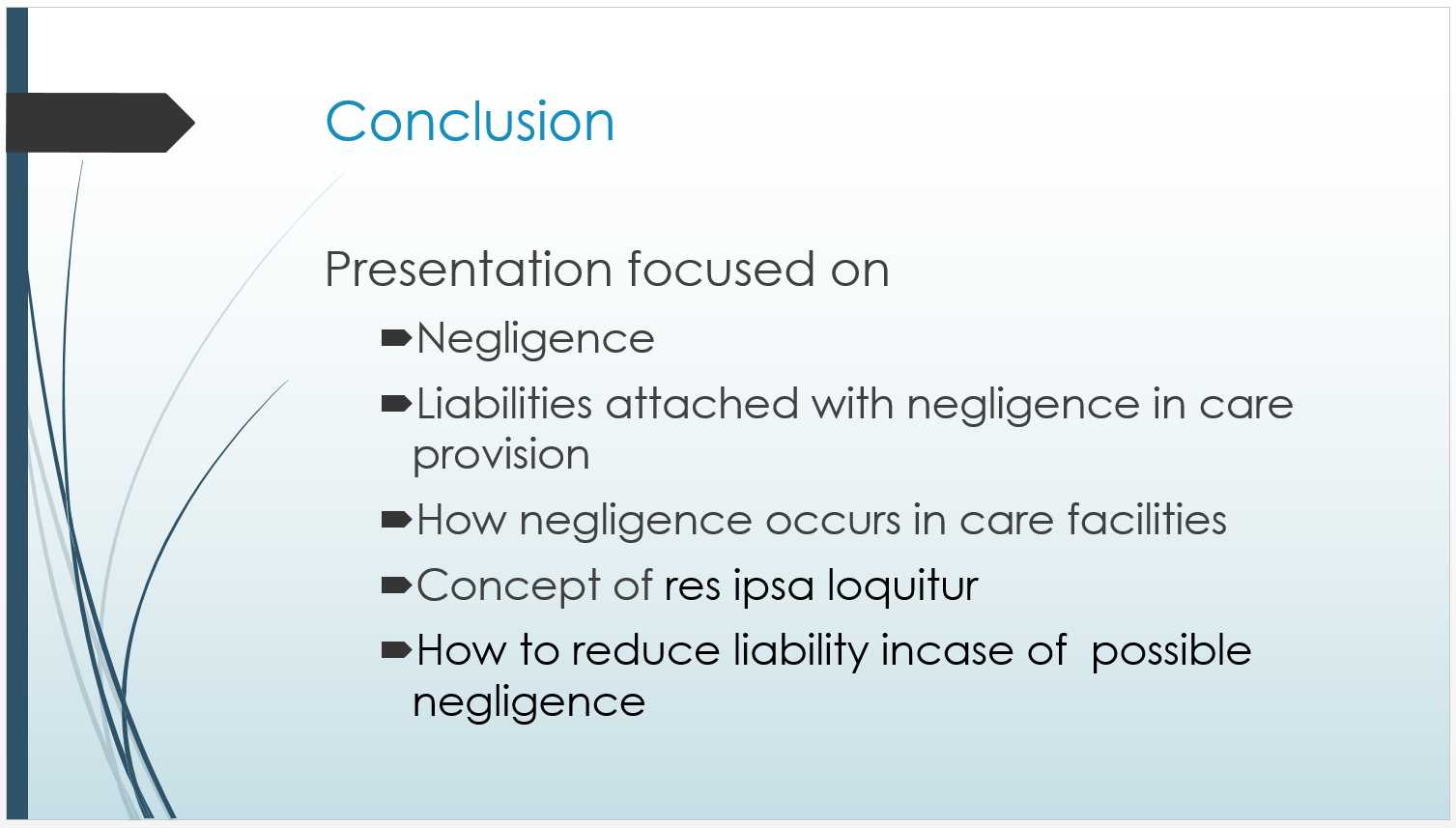
The presentation has discussed various aspects including liability issues in case of negligence, and the concept of res ipsa loquitur to explain some different forms of negligence. Negligence is a common issue in health care and having a proper understanding of the nature of the term and how to prevent the negligence and the liabilities attached is important to all care provider.
References
´Faria, L. B. G. D., Santos, C. T. B. D., Faustino, A. M., Oliveira, L. M. D. A. C., & Cruz, K. C. T. D. (2019). Knowledge and adherence of the nurse to standard precautions in critical units. Texto & Contexto-Enfermagem, 28. https://doi.org/10.1590/1980-265x-tce-2018-0144
´Guido, G. W. (2014). Legal and ethical issues in nursing (6th ed.). Upper Saddle River, NJ: Prentice Hall
´Paul-Emile, K., Critchfield, J. M., Wheeler, M., de Bourmont, S., & Fernandez, A. (2020). Addressing patient bias toward health care workers: recommendations for medical centers. Annals of internal medicine, 173(6), 468-473. https://doi.org/10.7326/M20-0176
´Pozgar, G. D. (2013). Legal and ethical issues for health professionals (3rd ed.). Boston: Jones and Bartlett.
´Wang, E. S., Velásquez, S. T., Smith, C. J., Matthias, T. H., Schmit, D., Hsu, S., & Leykum, L. K. (2019). Triaging inpatient admissions: an opportunity for resident education. Journal of general internal medicine, 34(5), 754-757. https://doi.org/10.1007/s11606-019-04882-2
Place your order now for the similar assignment and get fast, cheap and best quality work written by our expert level assignment writers.
Use Coupon Code: NEW30 to Get 30% OFF Your First Order
Other Answered Questions:
ANSWERED! Select a family other than your own and seek
ANSWERED!! Lily is a 20-year-old student at
ANSWERED!! In 4 or 5 sentences describe the anatomy of the basic unit of the nervous system
